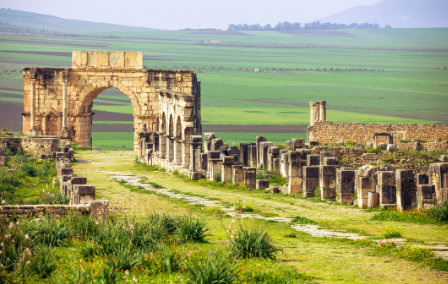Published 14th Apr. 2022
Reading time
Here in the UK, Easter conjures up images of folkloric bunny figures delivering sweet treats in the form of colourful egg-shaped chocolate, and there’s no denying that this enduring tradition is well-loved by members of every generation. Easter is also a time for slowing down, taking stock and celebrating new beginnings; in different places around this world, this occasion is marked in a variety of creative and colourful ways. While an Easter escape is great for soaking up some well-deserved sunshine (or snow, if skiing is your preferred pastime), it also offers the chance to experience some of these whacky traditions first-hand. If you fancy sampling France’s Easter omelette or taking part in a vibrant Guatemalan parade, then read on to find out about our favourite Easter traditions from around the world.
The Easter bunny might be the most well-known of the holiday’s chocolate egg-delivering animals, however in Australia residents are visited by a lesser-known marsupial: the Easter bilby. Previously a common sight across the country, they are now endangered due to the introduction of rabbits and predation by foxes. So to raise awareness for the protection of these desert-dwelling creatures, which are crucial to the eco-system, chocolate bilbies have replaced Easter bunnies in the land down under.
If your breakfast of choice includes eggs in any form, then the French village of Bessières, located about half an hour from Toulouse, is where you’ll want to be come Easter Monday. The village’s residents gather on Monday morning to crack approximately 15,000 eggs and cook a huge omelette, which is then sliced into thousands of pieces and served to villagers alongside bread. The tradition is said to date back to when Napoleon stayed in Bessières for a night and ordered the townspeople to gather all of the eggs in the village to prepare a giant omelette for his army.
The people of Antigua Guatemala go all out when it comes to Easter celebrations. Good Friday begins with an extravagant parade through the streets, with floats carried by between 50 and 100 residents. The most artistic aspect of this tradition comes prior to the parade, however, when local artisans fill the walkways with detailed, colourful sand designs (known as alfombras), crafted from a combination of sand and dyed sawdust. During the parade, the procession kicks up the sand, dispersing the intricate designs.
Greece’s Easter traditions also come in a colourful form, this time with red Easter eggs. The egg has long been a symbol of the renewal of life and red is considered to be the colour of life, thus the Greek red eggs represent the victory of life over death. A traditional Grecian Easter meal consists of roasted lamb (representing Christ), tsoureki (braided bread symbolising the Holy Trinity) and red hard-boiled eggs (standing for the blood of Christ). Tsougrima is another egg-related tradition which involves cracking eggs against one another; the person whose egg shell remains uncracked at the end is victorious and bestowed with good luck for the year.
When it comes to Easter traditions from around the world, Finland’s more closely resemble those observed on Halloween in other countries. On Palm Sunday and Holy Saturday, young children dress up as witches and carry willow twigs (thought to deter evil spirits), while wandering from door to door collecting chocolate, sweets and easter eggs. The tradition arises from the belief that witches and evil spirits would wander the streets reeking havoc in the run up to Easter, and the dressed-up Finnish children recite a blessing in exchange for the sweet treats; Virvon, varvon, tuoreeks terveeks, tulevaks vuodeks; vitsa sulle, palkka mulle (‘I wave a twig for a fresh and healthy year ahead; a twig for you, a treat for me’).
For Norwegians, Easter is heralded as a time of mystery and intrigue, thanks to the popularity of a crime fiction novel titled The Bergen Line Was Robbed Last Night, which was released the night before Palm Sunday in 1923. The advertisement for the novel in Norway’s most popular newspaper caused panic among readers who first interpreted it as a news headline. The subsequent buzz created by this ‘fake’ news story sparked the tradition of Påskekrim (‘Easter Crime’) and today the tradition is upheld with the release of new crime shows and novels just before the Easter holidays. Many Scandinavians retreat to the mountains for Easter and enjoy their crime fiction after a day’s skiing.
In Latin America, Easter is seen as a chance to repent sins and cleanse evil, so the burning of Judas effigies is commonplace on Holy Saturday. A more upbeat tradition is the performing of passion plays – theatrical re-enactments of Easter tales – beginning on Palm Sunday and continuing throughout the week. In Mexico City’s borough of Iztapalapa, the performances include up to 5,000 actors, making it one of the most elaborate Easter traditions from around the world.
Written by Luisa Watts
Practical advice and inspiration for your next trip

As Tom Holland (the esteemed historian, not Spiderman) so succinctly put it in the first edition of our magazine, Original Traveller, ‘Egypt is where tourism began’. And the next chapter in the history of tourism in Egypt is about to begin. We’re always looking for a reason to shout about this captivating country, and this November, we have the perfect excuse: the long-awaited opening of the Grand Egyptian Museum (GEM).
3rd November 2025 - Egypt Culture

Everyday life can be chaotic. Our favourite antidote? Escaping to one of the silent and sacred corners of the world. Whether hiking mystical mountains or observing ancient rituals, spiritual holidays offer a chance to reconnect and slow down. From the cloud-kissing monasteries of Meteora to the heart of Mexico’s Maya culture, read on to discover our favourite spiritual escapes around the world... Meteora monasteries, Greece Himalayas, India Yucatan Peninsula, Mexico Nairobi and Laikipia, Kenya Meteora monasteries, Greece Best for:
24th July 2025 - Culture

Any trip to Fes should include a day out to the Roman ruins of Volubilis, probably the largest and best-preserved ruins in Morocco. With scenery reminiscent of Russell Crowe’s homecoming in ‘Gladiator’ (more for the surrounding countryside than for the grisly welcome he got), Volubilis is a must-see for history buffs and lovers of picturesque vistas alike. Find out why you should visit in our Volubilis guide… 1.
23rd April 2025 - Morocco Culture

Our team of destination experts will get to know you and your unique requirements for your holiday

We work with you to build an ultra-personalised holiday itinerary with your choice of accommodation, experiences and activities

All of our holidays include little extras designed to make a big difference to your trip, from fast-tracking you through airport check-in and security to our network of local Concierges